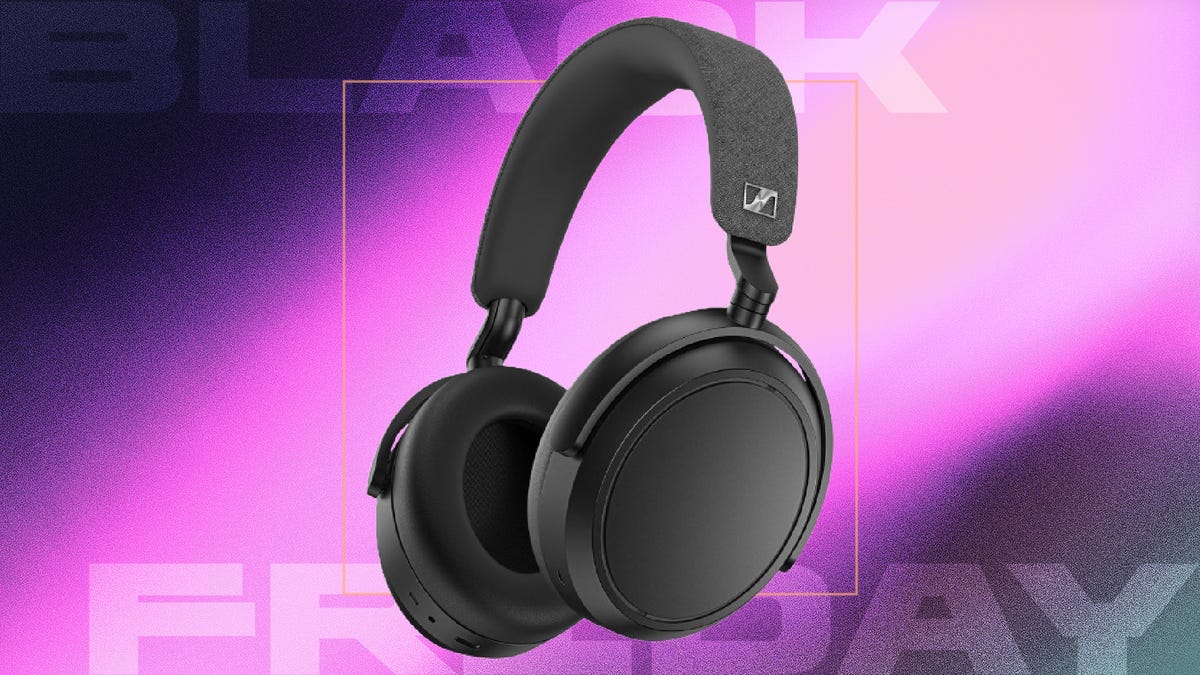Technologies
AT&T Says It Continued to Grow Despite Giving Promotions the Boot
A second carrier warns that there will be fewer wireless deals in the future.

AT&T ended the year with more phone and internet subscribers, according to results from the last fiscal quarter.
The Dallas telecom company reported its earnings on Wednesday, noting 656,000 postpaid net phone additions in the fourth quarter, a metric used by the industry as shorthand for success and dependable revenue. AT&T said it gained customers even though it had less generous phone promotions and deals than its competitors.
Despite inflation and worries surrounding a recession, AT&T CEO John Stankey was cautiously optimistic about the company’s forecast for the year.
«The good news is, I think we’re through the worst of it,» Stankey said on a conference call, though he noted that geopolitical disruption could be a swing factor changing the carrier’s 2023 outlook.
The results come at a time when wireless carriers are tightening their belts through layoffs and pulling back on the kind of promotions and freebies they once offered to lure in new customers. On Tuesday, Verizon also said it was moving away from aggressive promotions even if meant short-term losses. Consumers can expect to see fewer wireless deals going forward.
AT&T also ended the year by surpassing its goal of covering 130 million people with its midband 5G, with the telecom company hitting the 150 million mark. Midband spectrum runs on a frequency of 5G that brings wider coverage and higher speeds to more places. The spectrum was mostly in its C-band frequency range, which AT&T paid $27 billion to acquire in 2021 and started rolling out last year. AT&T wasn’t clear about whether this number includes the 3.45 GHz frequencies of 5G midband that the carrier paid $9.1 billion to acquire a year ago. The carrier set a new target to cover 200 million people with midband 5G by the end of 2023.
AT&T lost 13,000 net prepaid phone subscribers in the last quarter, including customers for AT&T’s Cricket brand that rivals T-Mobile’s Metro and Verizon’s new Total affordable prepaid offerings.
The carrier posted 280,000 broadband fiber net additions, noting that its fiber customers now outnumber customers with older DSL and other internet services. AT&T touched on its Gigapower fiber joint venture with private equity company BlackRock Alternatives, announced just before the end of 2022, which Stankey likened to an opportunity in the early race for wireless phone service. The venture aims to harness government subsidies to deploy multi-gig fiber in new areas to reach 1.5 million customers.
«The possibility to help close the digital divide and focus on access to affordable high-speed internet is a top priority of AT&T,» Stankey said.
The carrier acknowledged that it will have a new offering this year for fixed wireless, an internet frontier that AT&T effectively ceded to Verizon and T-Mobile in the early days of 5G. In the past, AT&T has confirmed it won’t expand into fixed wireless except on rare occasions to meet specific business needs. So long as fixed wireless delivers less bandwidth than fiber, AT&T isn’t excited about it as an alternative to wired broadband, Stankey said, noting any deployment would have a narrow niche where fiber can’t easily reach.
«I don’t see [fixed wireless] place long-term in dense metropolitan areas, and I don’t see it in reasonably well-populated suburban areas,» Stankey said.
AT&T reported revenues of $31.3 billion, which is around the revenue for the same period last year and slightly under the $31.39 billion expected. The carrier reported 61 cents of adjusted earnings per share, which was better than the 57 cents earned per share expected by analysts polled by Yahoo Finance.
At the start of the new year, AT&T expects wireless revenue growth of 4% and broadband revenue growth of 5% through 2023. The carrier noted it expects to spend around the same for capital expenditures this year, which hit a record $24 billion in 2022 due to expanding midband 5G and fiber rollouts.
AT&T’s stock was up a tenth of a percent to $19.18 in after-hours trading.
Technologies
Give the Gift of Great Sound With Sennheiser Headphones at a 60% Black Friday Discount
The Sennheiser Momentum 4 headphones are now down to a record low price of $179 this Black Friday.

Spending this Black Friday shopping for a holiday gift for an audiophile? With tons of items on sale, there are plenty to chose from. Sennheiser is behind some of the best wireless headphones you can buy, but its headphones can be prohibitively costly.
But for two days only, Woot is running a Black Friday deal that brings the Sennheiser Momentum 4 headphones down to $179 from the original $450 price. The Sennheiser Momentum 4 headphones are for audiophiles who want great quality and comfort. You have to be quick, as this deal ends on Nov. 30, or sooner if supplies run out.
Sennheiser Signature Sound gives you rich, balanced audio, and the companion Smart Control app lets you fine-tune the sound to your liking. Adaptive noise cancellation keeps outside distractions at bay, making these headphones great for work, commuting or just zoning out at home. The battery lasts up to 60 hours at moderate volume, and the voice-calling quality is solid, so you can rely on them for everyday use.
Hey, did you know? CNET Deals texts are free, easy and save you money.
If this style of headphones isn’t your cup of tea, then maybe a pair of the best wireless earbuds will be better suited to your needs. If you’re shopping on a budget, check out our roundups of the best gifts under $100, $50 and $25 to see more great gift-giving ideas.
HEADPHONE DEALS OF THE WEEK
-
$248 (save $152)
-
$170 (save $181)
-
$199 (save $150)
Why this deal matters
This deal surely won’t last. Sennheiser has made a name for itself as one of the best in the audio business, and that’s clear with the Momentum 4 wireless headphones. They offer adaptive noise cancellation, a Bluetooth connection and up to 60 hours of playback. When it comes to comfort and quality, it doesn’t get much better, especially with a discount like this.
Join Our Daily Deals Text Group!
Get hand-picked deals from CNET shopping experts straight to your phone.
By signing up, you confirm you are 16+ and agree to receive recurring marketing messages at the phone number provided. Consent is not a condition of purchase. Reply STOP to unsubscribe. Msg & data rates may apply. View our Privacy Policy and Terms of Use.
Technologies
Samsung’s Galaxy Watch 8 Is Now Just $250 in Multiple Black Friday Sales
The Samsung Galaxy Watch 8 is an even better value with this $100 discount.

The holiday season is here, and while your fitness goals might not be at the front of your mind right now, January is just around the corner. That means resolutions are upon us, so what better time than now to pick up a new smartwatch? You can get your hands on a new Samsung Galaxy Watch 8 while it’s available for a huge $100 off for Black Friday.
Amazon and Best Buy are both selling the Galaxy Watch 8 at the same $250 price. We can’t promise either deal will be around for long.
Samsung’s latest smartwatch packs serious hardware upgrades over it predecessor. It has a vibrant 46mm AMOLED display that shines up to 3,000 nits, along with 2GB of RAM, 64GB of storage, built-in GPS and advanced fitness tools, including sleep coaching and vascular load monitoring. It’s waterproof up to 50 meters and lasts up to 30 hours on a single charge.
CNET expert Vanessa Hand Orellana praised its refined design, detailed health insights and Gemini AI support, noting that it «has nearly every feature I could hope for.» Just remember, some tools work best when paired with the Samsung Galaxy phone.
SMARTWATCH DEALS OF THE WEEK
-
$339 (save $60)
-
$280 (save $70)
-
$300 (save $50)
-
$150 (save $100)
-
$49 (save $30)
Why this deal matters
The Samsung Galaxy Watch 8 packs serious upgrades for the price. With advanced fitness tools, sleep coaching and daily energy tracking, it’s one of the most feature‑rich smartwatches this year. The $250 price represents a new low for the model and includes a 90-day warranty. But with limited stock, it’s a deal worth grabbing quickly.
Join Our Daily Deals Text Group!
Get hand-picked deals from CNET shopping experts straight to your phone.
By signing up, you confirm you are 16+ and agree to receive recurring marketing messages at the phone number provided. Consent is not a condition of purchase. Reply STOP to unsubscribe. Msg & data rates may apply. View our Privacy Policy and Terms of Use.
Technologies
The Black Friday Gaming Deals Are Here. Shop Now and Save Big on PlayStation, Xbox and Alienware
-

 Technologies3 года ago
Technologies3 года agoTech Companies Need to Be Held Accountable for Security, Experts Say
-

 Technologies3 года ago
Technologies3 года agoBest Handheld Game Console in 2023
-

 Technologies3 года ago
Technologies3 года agoTighten Up Your VR Game With the Best Head Straps for Quest 2
-

 Technologies4 года ago
Technologies4 года agoBlack Friday 2021: The best deals on TVs, headphones, kitchenware, and more
-

 Technologies4 года ago
Technologies4 года agoVerum, Wickr and Threema: next generation secured messengers
-

 Technologies4 года ago
Technologies4 года agoGoogle to require vaccinations as Silicon Valley rethinks return-to-office policies
-

 Technologies4 года ago
Technologies4 года agoOlivia Harlan Dekker for Verum Messenger
-

 Technologies4 года ago
Technologies4 года agoiPhone 13 event: How to watch Apple’s big announcement tomorrow
